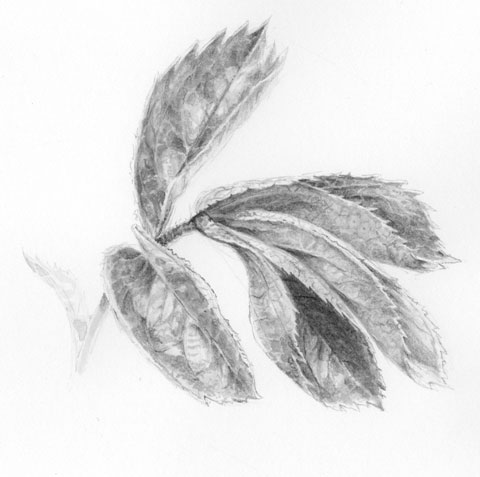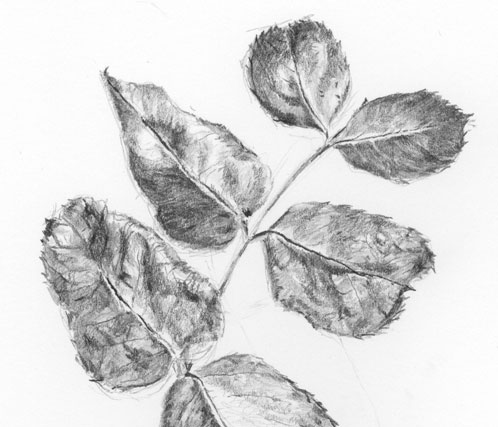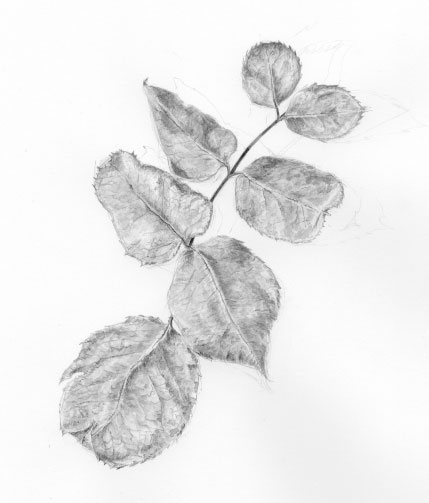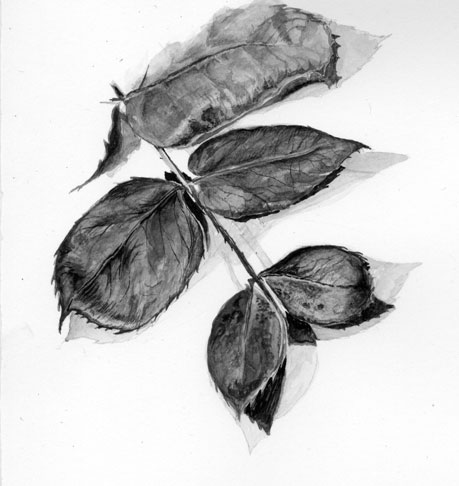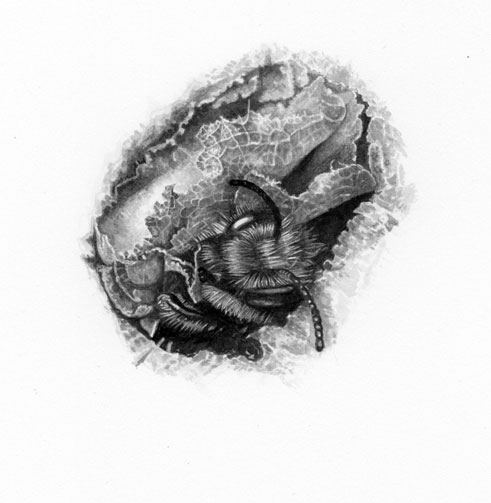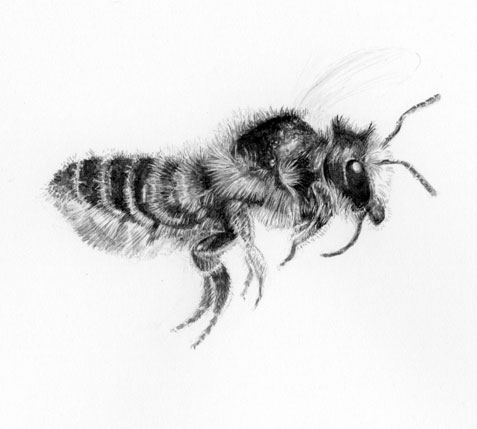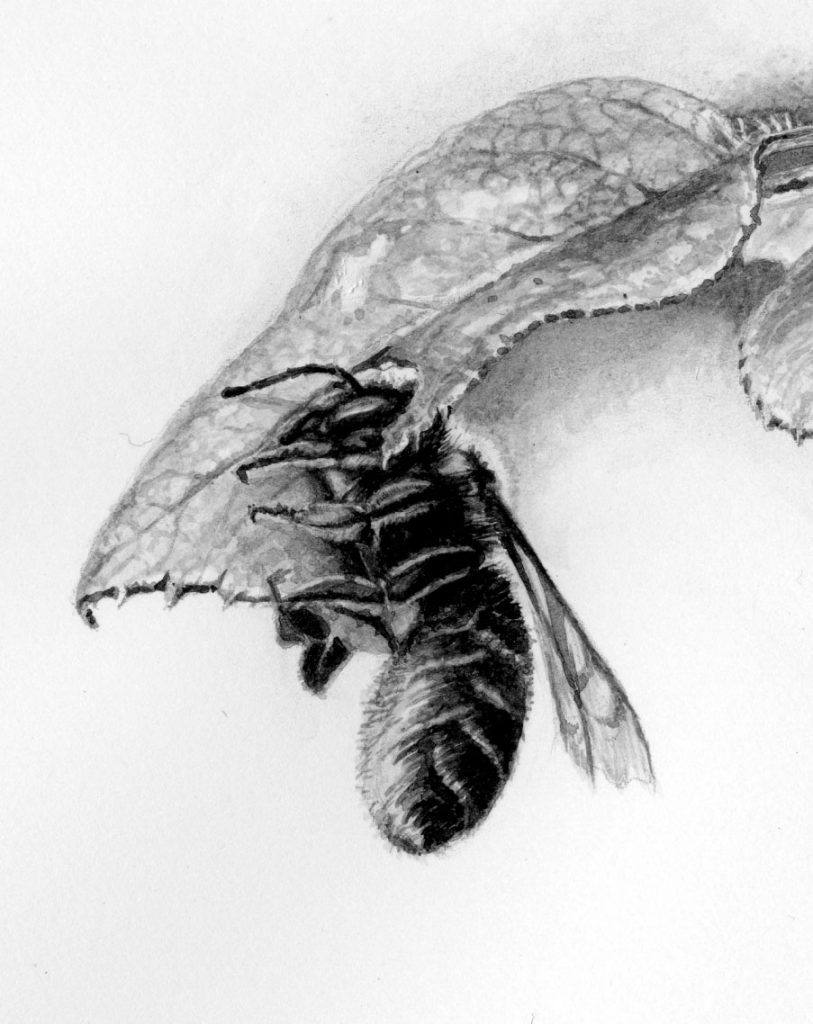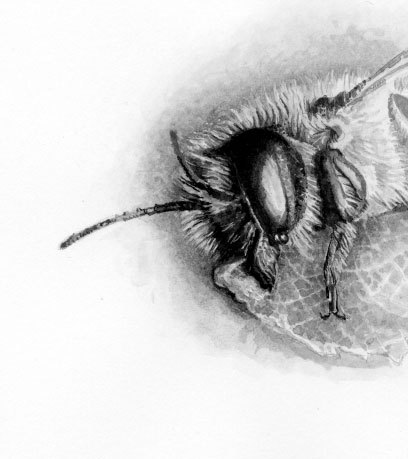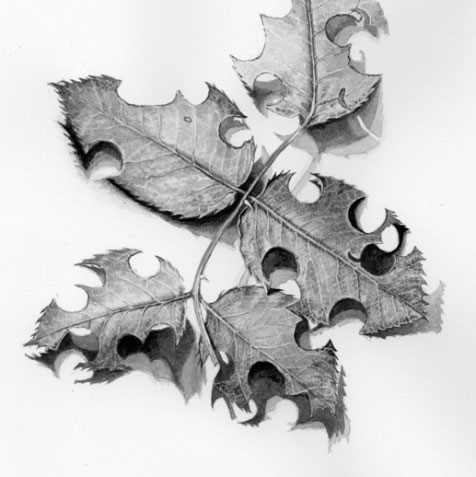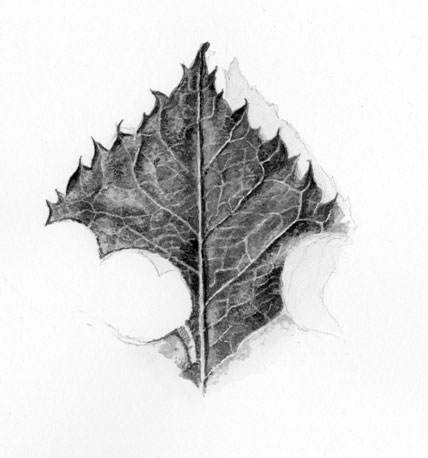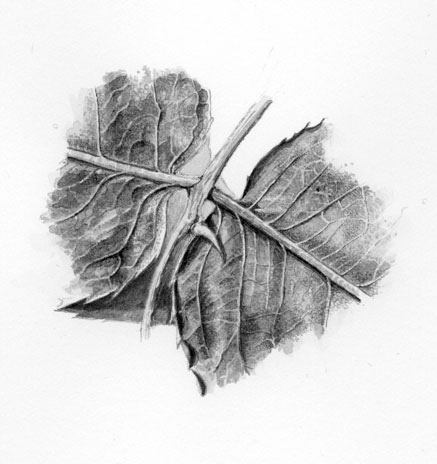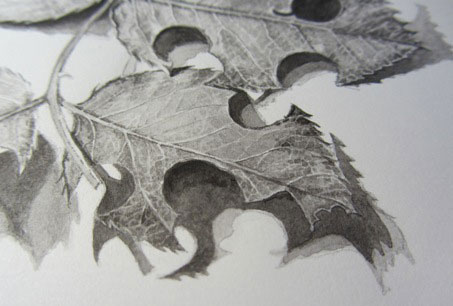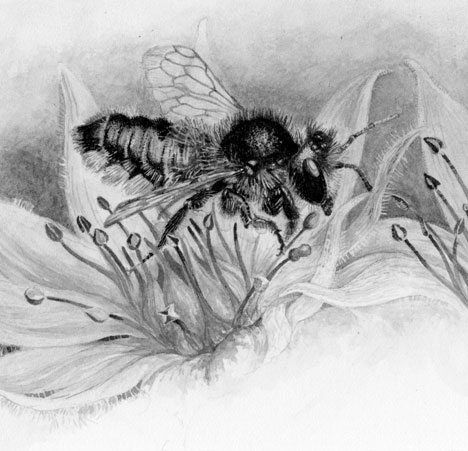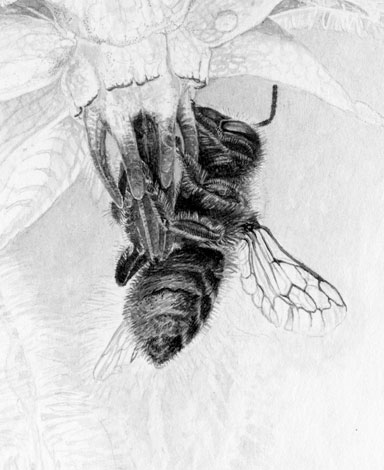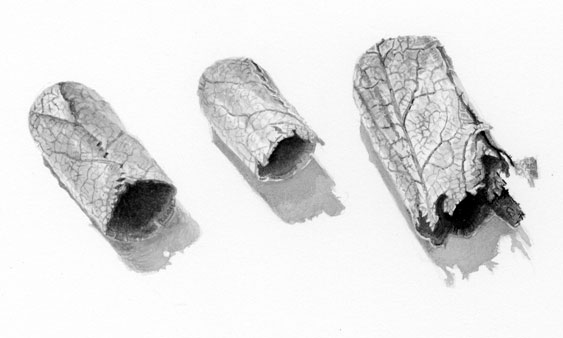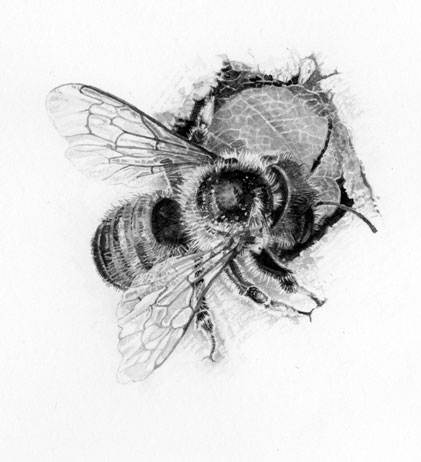Leafcutter bees in brush and ink:
The following is the text and images from the exhibition ‘Leafcutter Bees in Brush and Ink‘, 2013.
Taking an interest in leafcutter bees
A little over ten years ago I hung a bamboo “bee house” on a sunny wall in my garden. Months passed during which I saw no activity and I began to think no bee would take up residence. Late the following summer I noticed a few of the tubes had been blocked by leaves, and soon discovered this meant that Leafcutter bees had adopted them as their home.
For several years now I have studied and recorded the activities of these bees in my garden, making notes and sketches of their behaviour. Photographing the bees with a macro lens enables me to examine and become familiar with their anatomy. The bees are very patient, and allow me to go in very close with my lens while they work. I never harm a bee, and always work from ‘live models’. I also study the leaves and leaf cells which I’ve taken from empty nests, examining and drawing them under a magnifying glass.
Drawing with brush and ink
For my drawings I use Indian ink diluted with distilled water, building up layers of wash with small watercolour brushes. Sometimes I use a body colour of Chinese white to emphasise hairs or other detail. But usually the ‘white’ parts of the drawing are where I have left the paper to show through the ink, painting around the lighter elements. I draw under a magnifying light in order to capture the details which I have observed in nature.
Rose Leaf Studies (Drawings 1-4)
Rose leaves are of great importance to the Leafcutter bees, who use them of preference for their building qualities. In early spring, when the leafcutter bees are yet to emerge from their nests, the leaves of the rose unfold like the pages of a book, spread and grow.
The lives of leafcutter bees
Leafcutter bees (Megachile species) are a type of solitary bee, which does not live in a hive but builds an independent nest. This bee does not make honey, but provisions the nest with “bee bread” of pollen and nectar. As their nests contain no honey, they are not as ‘defensive’ of them as are honey bees and very rarely sting, making them an ideal bee to attract to the garden and observe, especially for children.
The leafcutter bees forms her nest of cells with many hundreds of pieces cut from plant leaves, which she meticulously shapes to her needs. The first indication of Leafcutter Bees in your garden may be the discovery of leaves cut with precision, often from rose bushes. Or you may discover a tubular nest in an old plant pot or in the furls of a garden parasol.
Bees and Leaves (Drawings 5-12)
The first action of a Leafcutter bee’s adult life is to cut through the cell wall formed in the previous summer by the laying female. Almost an entire year has elapsed since the parent bee laid the egg, which has hatched, grown and pupated, feeding on the bee bread provided. The bee has spent its entire existence up until now inside a dark leafy cell, and emerges into the light to spend a few short weeks on the wing; mating, feeding, building and provisioning a nest to provide next year’s population of bees, before dying in autumn.
The nests of the Leafcutter bee are made of leafy cells built into a tube-shaped hole which the bee has carefully selected for the purpose. The bee requires both circular and oval pieces of leaf in order to construct the nest, and holes of these shapes can be clearly seen in the leaves which the bees have visited. A bee will often make many cuts into a single leaf, while leaving others alone. Sometimes she will begin but then abandon a cut before completion, having perhaps realised that the quality of the leaf is not ideal for the task in hand.
To observe the cutting of a leaf by a bee is perhaps one of the most fascinating sights in the garden. The bee removes a circle of leaf in a few moments with a single cut, using her specially-formed jaws and sensitive antennae as a guide. She then flies back towards her nest, often breaking for a brief rest and to reposition the leaf circle within her jaw, so as to enter the nest tube with her building material at the correct angle. The bee will fly into the garden hundreds of times a day to harvest leaf pieces and collect food to provision the nest.
Bees Feeding and Sealing Nests (Drawings 13-16, right hand wall)
The Leafcutter Bee feeds on pollen and nectar which she collects from flowers. This same food is deposited by the bee into each nest cell in order to provide for her young. The Leafcutter does not have pollen sacs on her legs like a honey bee, but gathers the pollen on a mat of hair on her abdomen. The bright yellow abdomen of a bee fully laden with pollen is one way to identify the Leafcutter bee in the garden.
The cells of the nest are constructed one in front of the other, and the complete structure resembles a long, narrow cigar. Each cell has ends made up of many circles of leaves, and sides formed with overlapping elongated pieces of leaf. Before sealing each cell, the female lays an egg, and provisions it with food she has gathered from the garden. The cell is then sealed with many more layers of leaf disc formed into a convex shape which also serves as the base of the next cell along. The bee makes a firm structure by pressing each disc into place with her head, cutting away any spare material and sealing the edges with her jaws.
The Leafcutter bee works in this way for her few short weeks of life on the wing before dying at the end of the summer, by which time the next generation will have begun its life enclosed within the leafy cells of the nest.
Exhibition “Leafcutter Bees in Brush and Ink” at The Coach House Gallery, Winterbourne House, Edgbaston, 5th – 29th April 2013. More details here.
I discuss how these drawings were created in the following blog posts: Leafcutter bee feeding on borage flower: Cutting a leaf circle: Leafcutter bee in flight: Leafcutter bee emerging and Rose leaves in ink.
You can read an interview with me in Bee Mentor which looks at my interest in leafcutter bees, but also covers my drawing techniques and practice, and my photography.
